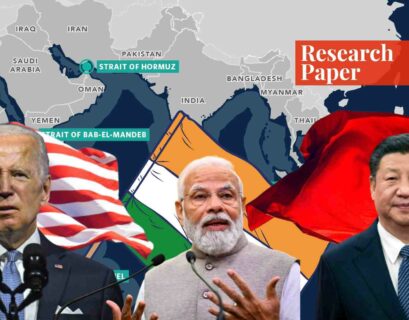Author
“The Shock Doctrine: The Rise of Disaster Capitalism” is authored by the Canadian writer and established filmmaker Naomi Klein, who is currently a professor of climate justice (tenured) at the University of British Columbia and the co-director of the Centre for Climate Justice. She presents a challenging critique of neo-liberal and global free-market proponents through her award-winning and best-selling streak of publications i.e. No Logo (2000), This Changes Everything: Capitalism vs The Climate (2014), The Battle for Paradise: Puerto Rico Takes On the Disaster Capitalists (2018), etcetera.
The Shock Doctrine has also been adapted into a documentary that premiered at the Sundance Film Festival in 2010. The book attacks the political ideology of neoliberalism, a school of thought generated by Milton Friedman, who stated that the private sector must be unregulated and that the state should loosen up its control over the economy.
Introduction
The book is divided into seven sections that direct shock therapy tactics from different angles through well-documented examples of the neo-liberal agenda around the world.
Shock Therapy
The roots of ‘shock therapy’ can be found in the electroshock experiments conducted on the human mind in the 1950s and ’60s by the famed Scottish-born psychiatrist Ewen Cameron of McGill University Allan Memorial Institute in Montreal. He believed that to develop an elusive clean slate, the old pathological patterns should be dismantled through a series of shocks (depatterning) conducted on the human brain.
Henceforth, when the human mind has been wiped clean, new personalities (reprogramming along with psychic driving i.e. playing recorded messages so that the patient would start behaving differently) can be imprinted. Such techniques were administered under the supervision of the Central Intelligence Agency and were later used as a tool for brain-washing and torture around the world (Chile, Argentina, Brazil, etc.).
Taking a cue from the scientific laboratory, Milton Friedman, the guru of unfettered capitalism and the proponent of the Chicago School of Economics used ‘shock’ and warfare to deregulate and re-structure economies.
Experimenting in South America
The Shock Doctrine investigates how Friedman and his subordinates advanced their free-market experiments on Latin America, by initiating the ‘Chile Project’ in the 1970s. This was a direct result of the threat that ensued to corporate America by the growing success of nationalist economies and totalitarian communism in the Southern Cone around the 1950s and 60s. Hence, the regime change mechanism was leveraged by the CIA in collusion with neoliberals and certain ideologically influenced Chilean leaders by deploying the government of General Augusto Pinochet in 1973.
The Chicago School counterrevolution was quickly advanced in countries like Uruguay (1973), Brazil, and Argentina (1976) where US-backed governments terrorized the public in the form of eliminating popular revolts while staging ideological cleanup operations, thus making sure that the destruction and reconstruction cycle has been maintained (e.g. “Kubark Counterintelligence Interrogation” manual, a 128-page secret manual highlighting torture techniques).
Heading to the UK
Generating spectacular profits from the shock therapy experiments in the Southern Cone, global multinationals were greedy enough to explore lucrative assets in the West too (phones, airlines, and power companies). Therefore, the neo-liberal agenda overtook a rather subtle route through the United Kingdom under Prime Minister Margaret Thatcher.
Although Thatcher was skeptical of the adverse methods adopted in Chile, the 1982 Falklands War (conflict over a cluster of Islands) against Argentina and the coal miners’ strike in 1984 (the enemy within) altered the corporatist crusade by bringing a radical capitalist transformation for the first time in a liberal democratic country.
She was able to transform her dying political fortune by harnessing the war and strike to justify her extraordinary emergency measures to control the economic freefall. This included privatizing government assets such as British telecom, gas, airways, and steel.
Case Studies
This section continues the sequential manner of the viselike grip of the corporate junta continuing off with Poland in the 1980s. The resilient workers’ strike known as Solidarity under its leader Lech Walesa in tandem with the rising prices of social amenities protruded a defiant stance against the Moscow-controlled communist government in its Eastern Empire.
Their minuscule strike quickly changed into a full-blown revolution, demanding a new socio-economic system based on participatory government. Their movement did witness frequent crackdowns by the ruling communists, but their overall aspirations were fulfilled through snap elections in 1988 which resulted in the new ‘Solidarity Government’.
Despite their motive of building a post-communist economy through self-governance, the cruel entry into democracy had been a major shock to an economy that wasn’t used to its procedure. Soon, the country’s economy was immersed in a complete meltdown with no way out. Hence, Jeffrey Sachs induced a shock therapy transition in Poland that not only created a convertible currency but provided space for capital markets to consume the state industry. Poland implemented the very policies that were antithetical to solidarities’ vision.
The African National Congress’s (ANC) resistance in South Africa against apartheid and racism was also wrought with constricted freedom. The amalgamation of the ‘Freedom Charter’, the backdrop of the freedom movement, demanded equal rights to all the inhabitants of South Africa along with the redistribution of land and wealth amongst everyone.
Under the above scheme of thought, Nelson Mandela, after a historic win in the 1994 elections, entered into negotiations with the ruling National Party (under F.W. De-clerk) to discuss the transition of power on two fronts, the political and the economic. De-clerk knew that they had a weak stance on the political front, which is why he spent his energy and creativity in the economic realm.
De-clerk attempted the balkanization of South Africa’s economy with relevance to impartial economic experts who deployed structural adjustment programs, thus tying the limbs of the new government forever. The ANC, without even realizing it, conceded important national assets such as the central bank, water, electricity, and mines to the white mega conglomerates.
Naomi Klein did not hesitate to explore Russia under Boris Yeltsin (also known as the Russian Pinochet) who was responsible for the dismemberment of the Soviet Republic and the onset of the shock therapy program in Russia. Once again Jeffrey Sachs was responsible for the implementation of free trade policies, rapid privatization, and the liberalization of prices, which converted the communist state into a corporatist one. The direct result was the birth of ‘the oligarchs’ who together with the Western fund managers stripped the country from its valuable assets, leaving the underclass to fend for themselves.
Disaster Capitalism
The original theme of the book is revived as we move towards the Bush administration’s formidable role played in accumulating capital from catastrophes, both natural and man-made.
The positive impact and profits reaped from exciting market opportunities brought by wars, hurricanes, epidemics, and natural disasters (tsunami in Sri Lanka and Hurricane Katrina in New Orleans) have helped the US’s sprawling ‘Disaster Capitalism’ industry (Department of Homeland Security established after 9/11) including defense contractors (Lockheed Martin), arms dealers, and high-tech security firms and construction companies.
The US’s Mission
The US has encased its predatory impulse by capitalizing on emergencies which can be reflected in the 2003 Iraq War. The US quest for domination and authority blinded the very means to achieve the end and so war was used as a political tool to provide the context that to protect their gains and demonstrate their capacity, it was necessary and justified.
The US tried to carve the image that it had embarked upon a civilizing mission designed to remodel and update Iraq, but it looted and plundered, and hence destroyed the social fabric and customs of the Iraqi people. Their inability to view beyond the colonial paradigms of self-interest and binary opposition has generated a deconstructive cycle of subordination, oppression, and exploitation which have persistent and profound implications.
Fighting Back
The Shock Doctrine ends with an optimistic note by highlighting the enlightened and moral politicians and people who are pushing back against free-market policies that have been wreaking havoc since the dawn of globalization. She shows the hopes of resistance by indicating renewed economies salvaged through the rigorous rebuilding efforts by the common masses. Countries like Argentina, Venezuela, Brazil, Lebanon, and Thailand have staved off the plague of neo-liberalism and capitalist interventions.
Strengths
The author has included strong narratives and first-hand case studies that are compounded with extensive research and confessions from the capitalist players themselves. Her skills in investigative journalism have painted a unique picture by giving substance to conspiracy theories with error-free evidence.
Her vantage point of left-wing politics entices the readers to know more about the corrupt history of modern economics and how the neo-liberal paradigm under the US as the sole superpower is hopping from crisis to crisis to evolve its war economy.
Being a proponent of mixed economies, Klein also clearly voices her support for democratic socialism indicating that market-based systems can thrive as long as there is careful deliberation of cooperatives, markets, and nationalized commanding assets.
Weaknesses
Naomi Klein’s explanation can be declared null in several areas. Firstly, the parallels associated with brainwashing a human brain and creating a clean platform by ideologically cleansing a country’s culture and history is a flawless utopia.
The number of case studies provided by her proves one point and that is, a country cannot be regressed to its infancy as there is not one factor in play, but a magnitude of factors that prevents any sort of ideology to be implemented without any repercussions. Take Iraq’s example; the country continues to be in turbulence, but the resistance and fight for preservation remain. Moreover, ironically, Ewen Cameron’s hypothesis failed later on due to which the CIA in tandem with other Western countries faced humiliating lawsuits.
The main claims of the Chicago School were rather repetitive and the visual description of the torture techniques was rather unnecessary; the reader’s discretion should’ve been advised. Adding on, her critique of corporate globalization was indeed well amended through case studies, but as a reader, her viewpoint of the ideal economic system, that is, democratic socialism was still missing.
A rather vague viewpoint was presented which leaves the reader questioning the very claims she’s trying to make and hence a comparative analysis was compulsory. Another weakness of the Shock Doctrine is its abrupt ending. While Naomi Klein does include a positive development to halt the neo-liberal movement, she fails to include the possible future economic predictions concerning the present economic algorithms and models.
Conclusion
The Shock Doctrine summarizes the oblique picture of the global capitalist movement under the ideologue Milton Friedman, which realigns with his statement that “only a crisis – actual or perceived produces real change“. Naomi Klein elaborated through the consistent use of shock and awe warfare to explain how neo-liberal lackeys dominated the world economic paradigm, exploiting disadvantaged groups by amassing unprecedented wealth and privilege which resulted in two distinct economic classes.
The policies which envisaged such transformations leaned towards increased imbalance and fragility thus allowing foreign corporations and elite governments to seep into economic models through their porous borders. This invited a continuous spiral of economic dependency and an urge to capitalize on global upheaval as in the case of war, disasters, and the present security-based economy.
If you want to submit your articles and/or research papers, please check the Submissions page.
The views and opinions expressed in this article/paper are the author’s own and do not necessarily reflect the editorial position of Paradigm Shift.



















